Observations of Feline Polydactyly
By Sheila L Curtis, Indys, & Lucinda King BA (Hons), Handaros. 17th January 2007.
(Reprinted with permission)
Cats usually have eighteen digits, 5 on each foot and 4 on the hind feet. Polydactyl (also referred to as hyper-dactyl) cats have extra digits on their feet. Polydactyly is the presence of more than the usual number of digits. It derives from the Greek 'poly' meaning 'many' and 'dactyl' meaning 'digit'. Accounts of polydactyly are mentioned as far back as the writings of Darwin, so there would appear to be nothing extraordinary about it. According to veterinarian Arnold Plotnick the first scientific recording of polydactyly in the cat was 1868. [1] However Darwin discusses it in the 1850's "I have heard of several families of six-toed cats, in one of which the peculiarity had been transmitted for at least three generations." [2] Polydactyly occurs in several species of animals: humans, cats, dogs, guinea pigs, fowl etc. It is important to note that each species has it's own unique characteristics and different modes of inheritance. Polydactyly in the cat is most similar to that seen in the fowl, with exception of the mirror imaging seen in the latter. (Danforth 1947) "The polydactyl trait probably arose as a spontaneous mutation, and a polydactyly kitten from two normal-toed parents may represent a new mutation event". [3]
There are two particular breeds that can claim historical reference to polydactylism; the Pixie bob, which was founded on a polydactyl cat and the Maine Coon. There have been reports that this trait once accounted for 40% of the Maine Coon breed, but there is no specific data to substantiate these figures. Accounts of polydactyly in the Maine Coon cat are documented as far back as 1876, when an MCBFA member discovered a painting depicting the trait. [4] In recent years there appears to be a rise in the number of breeders working with the polydactyl trait and MCPI, an International organisation has been formed to promote and protect the trait in the Maine Coon.
There are two forms of polydactyly referred to by embryologists, pre-axial and postaxial. To differentiate between the two if one remembers that pre-axial is on the inside edge of the paw, (or in the human, thumb side) and post-axial at the outside edge (or little finger side in the human). The post-axial form is rare and extra digits found post-axial are unlikely to be fully formed digits, whereas those located pre-axial are invariably fully formed. As noted in Robinson's [5] the polydactyl gene is denoted as Pd. Sis & Getty (1968) [6] report that the characteristic is inherited as an autosomal single dominant trait, the probable effect of which is to incite some change in the pre-axial (ie medial) part of the limb causing an excess of growth in that area. Jezyk, goes on to state ""There is no apparent clinical significance to these conditions, other than an increased propensity for traumatic injury of the partial supernumerary digits". However, "Polydactyly is also a feature of several more serious syndromes". (PF Jezyk [7]) As polydactyly is sometimes seen accompanying other unwanted genes and disorders it adds to some confusion. For example some authors discuss more than one form of the Pd gene and include in this other dysostoses such as Syndactyly, which is a condition that causes a split foot with it's causal gene being Sp. There are other forms of polydactyly caused by environmental matters (i.e. pollution), or rare genetic disorders such as Ellis-van Creveld syndrome. These are commonly accompanied by other symptoms and this is an entirely different issue and is not associated with the Pd gene. (See Appendix for further discussion).
According to geneticist and TICA Genetics Committee Chair Dr Solveig Pflueger "most polydactyl cats... have a form of pre-axial polydactyly with the extra digits(s) on the thumb side of the foot... " The Pd gene causes the entirely harmless form of polydactyl.
Clinical Study
One of the problems with researching feline polydactyly, is that there is a general dearth of scientific research and much of the writing is not correctly referenced and therefore unsubstantiated. There are very few scientific studies into polydactylism and those that have been undertaken are quite old. However, they are worth reviewing, whilst bearing in mind that as far as is known the cats studied were DSH and DLH and not pedigree cats. The writers were only able to locate three scientific studies specific to polydactyly in felines: Heredity of Polydactylism by CH Danforth (1947) [8], Morphology of the Feet in Polydactyl Cats by Ch Danforth (1947) [9] & The Anatomy of Polydactylism in cats with Observations on Genetic Control by Chapman & Zeiner (1961) [10]. For ease of reading, Danforth's Heredity of Polydactylism shall be referred to as Danforth 1 and Danforth's Morphology of the Feet in Polydactyl Cats as Danforth 2. For the purposes of his research Danforth defines normal as: "conditions found in the great majority of ordinary cats."
With the exception of one cat that produced at different times 2 kittens with herniasand one with a degree of ataxia, no other abnormalities were noted in any combination of matings in any of the scientific studies evaluated. Considering the degree of inbreeding concerned this is somewhat remarkable.
Further complex genetic study & explanation is required to fully understand expressivities of the Pd gene. Dr Lyons at UC Davies is currently calling for DNA samples of polydactyl Maine Coons, to help identify the presence of the Pd gene. In most cases it is fairly obvious if a cat has this Pd gene. However any further scientific information may aid better understanding.
Heredity
In the mouse it has been found that polydactyly is caused by a mutation in the Gli3 gene and it is this gene that is thought to be associated with pre-axial polydactyly. The mutation causes repression of the Shh gene (or Sonic Hedgehog). Whether this holds true for the cat is as yet undiscovered.
In humans recessive polydactyly is possible, however Danforth & Chapman rule out this possibility in the cat and prove in their research that the form of polydactyly in the cat is a simple incomplete dominant gene with variable expression.
For his first study Danforth looked into the heredity of polydactyly and used controlled and uncontrolled data from a male and female cat he had found living 85 miles apart. Additionally he used data from cats belonging to friends. In total Danforth bred 234 kittens in 55 litters, averaging 4.24 per litter, undertaking poly x poly matings, poly x non-poly matings & non-poly x non-poly matings. The biggest percentage expression (28%) was that of 6, 6, 5, 5, (ie 6 toes right fore foot, 6 toes left fore foot, 5 toes right hind & 5 toes left hind) though we do not know from what combination of matings these expressions were initiated. He sexed only 100 kittens at birth, of those 52 were male and 48 female, unfortunately he fails to sex the remaining 134 kittens. Danforth analysed the feet of 97 polydactyl cats and discovered 25 different expressions of polydactyly. (See Table 1.) [8] The expression varied from just one extra digit on one front foot (5, 6, 4, 4) to two on the front, and two on the right posterior to one on the left (7, 7, 6, 5) Sadly he does not correlate between number of toes and parental polydactylism, so we do not know from this study whether or not number of toes on both parents affects number of toes on the offspring. However, he does suggest that there is "little correlation between grades of expression and offspring".
Danforth concludes: "The evidence thus far accumulated indicates that in the cat polydactyly is conditioned by a single dominant gene whose probable chief effect is to incite some changes in the pre-axial part of the limb bud causing an excess of growth in that region. From this excess tissue, enlarged supernumerary digits are developed, none of which in itself has a genetic individuality. The trait is not related to sex, and no evidence is found that its gene is lethal when homozygous."
It would appear that polydactyly is a simple autosomal dominant trait with variable expression and a cat needs only one copy of the gene to express it. However Danforth found that even when breeding poly x poly only 76.23% of the offspring expressed the trait to some degree. When breeding poly x non-poly almost one third (32.5%) of the offspring were polydactyl. Danforth surmised from his results that only three of the cats used were homozygous for the trait, therefore, even when bred to a non-poly 100% of the offspring was polydactyl. The only way of knowing whether the cat is heterozygous or homozygous for the trait would be through test breeding, though the chances of homozygity would likely be increased where the offspring results from two polydactyl parents. The heterozygous cat would carry the Pd & the pd gene therefore in these cats the trait cannot be fixed and this is true even when breeding two polydactyl cats together assuming they were both heterozygous. (Plotnick [1].)
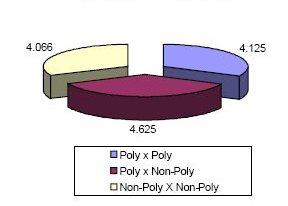
Image 1. Danforth Average Litter Size.
Morphology
Danforth's second study looked at the morphology of the polydactyl cat. [9] This study investigates the embryological changes, which occur in-utero. Data was collected from 150 cats via embryological material and the feet. All cases studied were of the pre-axial form. He noted that evidence of polydactyly could be ascertained from day twenty of intrauterine life, which is marked by excess development on the "cephalic margins of anterior limb buds."
In later stages of intrauterine growth the excess materials develop into an extra digit(s). The formation of the extra digits include the same veins, muscles, bones etc of the other digits, with the exception of the radial sesamoid, which Danforth states is "rarely, if ever present" in polydactyl cats. Interestingly it is the radial sesamoid which is responsible for the opposable thumb found in the Panda. (Salesa et al 1995) The following statement by Danforth did give the authors cause for concern: "But when there are 6 metatarsals, all the carpals except the pisiform may be affected to some extent, the affect being chiefly that of flattening the wrist and slightly displacing bones on the ulnar side with resultant minor changes in their articular surfaces. In such cases the triquetral and hamate may be rotated somewhat ulnaward, and the capitate may be much reduced in size." However, according to diagnostic radiographer Kevin King BSC, SoR, CoR, IRR, it is possible that these changes occur to allow for full functionality of the foot. Whilst not a veterinarian he does suggest that X-rays of the feet may be a good idea to ensure any possible rotation is not too great. Although, according to Solveig Pflueger this is only a concern where there is a presence of a triphalangeal pollex (see below).
Danforth goes even further, to say: "The only difference between potentially polydactyl and normal specimens is in the amount of undifferentiated tissue on the pre-axial border of the limb".
Chapman and Zeiner also studied polydactyl cats. Observing thirty-one cats and noting eight expressions, three variations of the fore feet and five of the hind feet. They dissected the fore and hind legs in one cat of each type to study the anatomy of each. Contrary to the work of Danforth they do note the existence of the radial sesamoid. This suggests that the form of polydactyly observed differed to that of Danforth. However, similar to the observations of Danforth they observed that the phenotype of the sire did not breed true. This supports the theory that polydactyly is an incomplete dominant gene with variable expressivities. Nothing remarkable is noted in the paper and conclusions concerning morphology are akin to that of Danforth's. That is that predominantly each extra digit is properly formed and anatomical formation is complete. For example Chapman & Zeiner, "The paws in all cases possessed normal functionability and sensory reactions... branching of the terminal nerves correspond with the digital duplications... where digits were duplicated corresponding phalangeal pads were present, in some instances extra palm or sole pads were found." This is confirmed by the observations of Sis & Getty.
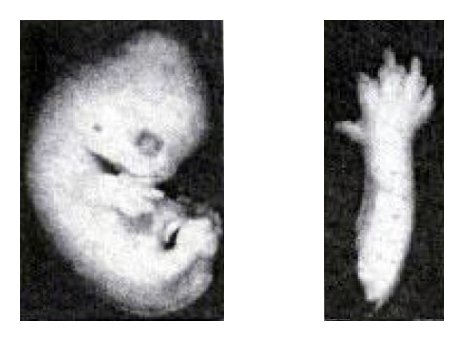
Image 2. (Image reproduced and copyrighted to
Morphology of the feet in polydactyl cats by C.H. Danforth)
Polydactyly presents with variable expression. Danforth noted suggestions of mirror imaging but only very secondary. As mentioned cats have the pre-axial form of polydactyly, this means the extra digits are produced on the thumb side of the foot. The extra digits can take the form of either toes or extra dewclaws. (See Image 3.) Since this trait presents with variable expression it is possible to have a different foot configuration on all four feet. However, Chapman & Zeiner observed the following: "It was found that, although several types of polydactylism could be described, one duplication was common to all types. This involved skeleton, musculature, and innervation of the second digit and was the type present in the male who fathered all of the litters". They go on to note: "Crosses were made using a polydactylous male, two females of differing polydactylous types, and a normal female. The basic pattern of the male persisted in all polydactylous offspring, but additional variables were added to it. It became obvious that polydactyl is not caused by a recessive gene in cats. Although simple dominance serves to explain the general trait, a more complex genetic explanation is needed to account for the several varieties of polydactyly".
| Table 1:Statistics on variation in the feet of 97polydactyl cats with full records. | |||||
| Gross variation in expression | |||||
| Anterior | Posterior | Number of | |||
| Right | Left | Right | Left | cases | |
| *5 | 6 | 4 | 4 | 1 | |
| *T | T | 4 | 4 | 9 | |
| T | T | 5 | 5 | 3 | |
| T | T | 6 | 6 | 1 | |
| T | T | 5 | 4 | 2 | |
| T | T | 5 | 6 | 1 | |
| T | 6 | 4 | 4 | 2 | |
| T | 6 | 5 | 5 | 3 | |
| 6 | T | 4 | 4 | 1 | |
| 6 | T | 5 | 5 | 1 | |
| 6 | T | 6 | 6 | 1 | |
| 6 | 6 | 4 | 4 | 8 | |
| 6 | 6 | 4 | 5 | 1 | |
| 6 | 6 | 5 | 5 | 27 | |
| 6 | 6 | 5 | 6 | 1 | |
| 6 | 6 | 6 | 6 | 12 | |
| 6 | 7 | 5 | 5 | 5 | |
| 6 | 7 | 6 | 6 | 3 | |
| 7 | T | 5 | 5 | 2 | |
| 7 | 6 | 4 | 4 | 1 | |
| 7 | 6 | 5 | 5 | 3 | |
| 7 | 6 | 6 | 6 | 1 | |
| 7 | 7 | 4 | 5 | 1 | |
| 7 | 7 | 5 | 5 | 6 | |
| 7 | 7 | 6 | 5 | 1 | |
| Total | 97 | ||||
| *Note: The first entry had three normal feet but six digits on the left anterior. T ("Thumb") means only 5 digits, but with the radial one enlarged. | |||||
1. Fore Feet.
The following illustrates the formations commonly seen by Danforth.

Image 4 [11] shows the X-rays provided by Danforth in his study. Type A is a non polydactyl, the others all exhibit polydactylism. These X-rays along with those of the hind feet below serve as good examples of variable expression.
Interestingly B & C are from the same animal, which substantiates the evidence that polydactyly has variable expression. Example C is the form most often found in the Maine Coon & Pixie Bob polydactyl, often referred to as the mitten paw.
Each extra toe will also have it's own terminal pad (fingertip), and usually additional palmar and plantar pads.
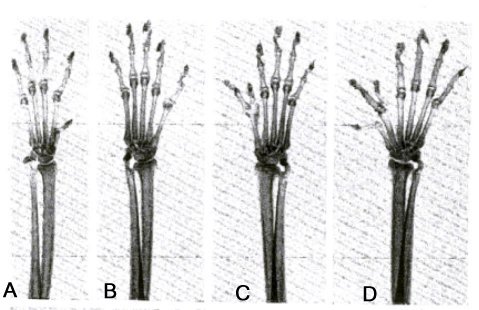
Image 4. (Image reproduced and copyrighted to
Morphology of the feet in polydactyl cats by C.H. Danforth)
There appear to be two types of physical presentation in polydactyl cats. One is known as mitten paws and the other as patty feet or snowshoe. Danforth & Chapman observed examples of both in their studies. Both the Pixie Bob and the Maine Coon generally display the mitten paw. To illustrate the differences both the kittens in the Images 5 & 6 have supernumerary digits on the medial side of the foot, however one is an example of the more common mitten paw and the other the less common snowshoe.
 |
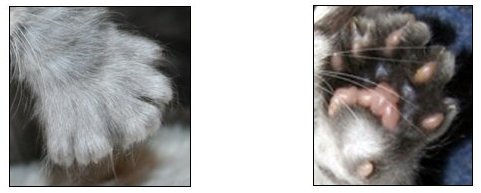 |
| Image 5. Polydactyl kitten displaying the mitten paw. (Photo credit: Sheila Curtis) |
Image 6. Polydactyl kitten displaying the patty foot. (Photo credit: Sheila Curtis) |
Interestingly in his study Morphology of the Feet in Polydactyl Cats, Danforth notes that in the case of a 6 toed hind foot that it generally appears more symmetrical than a 6 or 7 toed fore paw. He also didn't encounter any case in his study where there were more than 6 digits on the hind foot. He also notes "Early development of the posterior limbs lags somewhat behind that of the anterior, but the process are roughly similar".
The X-ray images of the hind feet taken by Danforth in Image 7 below, illustrate from left to right, a non-poly hind foot, a foot showing a faint dewclaw (see to right of metatarsals), a polydactyl hind foot with one extra digit, and a polydactyl foot with two extra digits.
Images 8 & 9 allow for comparison and illustration of the skeleton of both the non-poly and polydactyl foot. These images have been reproduced from the Sis & Getty article and the polydactyl foot observed is clearly that of the pre-axial form. A structure they note that they have exclusively observed in the cat.
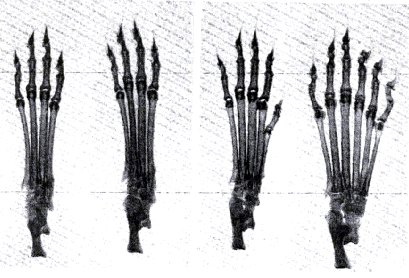
Image 7. (Image reproduced and copyrighted to
Morphology of the feet in polydactyl cats by C.H. Danforth)
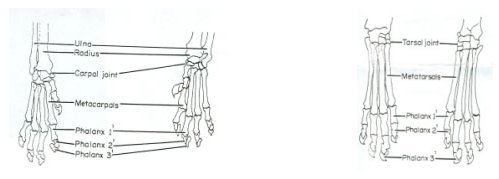
Image 8.
(Image reproduced and copyrighted to Polydactylism in Cats by R.F. Sis & R. Getty)
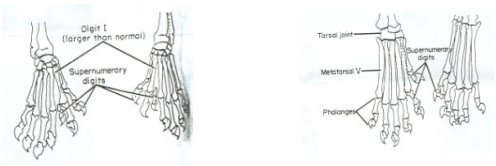
Image 9.
(Image reproduced and copyrighted to Polydactylism in Cats by R.F. Sis & R. Getty)
Chapman and Zeiner conclude, "Although simple dominance serves to explain the general trait, a more complex genetic explanation is needed to account for the several varieties of polydactyly."
Radial Deformaties
In the 1990's a breeder in the US was breeding cats with such badly deformed limbs that their legs were twisted so as to disable them. The breeder was not breeding specifically for the polydactyl trait but for a cat "that would be less likely to run away and become wild". These cats have been commonly termed 'twisty cats' and it seems that a severe form of radial hemimelia was at play. Hemimelia is a developmental abnormality characterised by an absence of all or part of the distal half of the limb. This condition is also referred to as radial hypoplasia/aplasia though more commonly in humans. (Radial hypoplasia simply means an underdevelopment of the radius and aplasia an absence of the radius and this can vary in degree from a minor shortening of the radius to an absent radius.) The abnormality causing these conditions is different to the polydactyl gene and is thought to occur from a "lack of AER-mesodermal interaction during limb outgrowth." (Towle & Breur, 2004). [11] According to Towle & Breur the most common form of hemimelia in cats is preaxial longitudinal intercalary radial hemimelia. (2004) They further state that "radial hemimelia in Siamese and domestic shorthair cats may be a hereditary trait, but there is no such evidence in dogs." However Jezyk argues, "Without further evidence to support the claim, the inherited nature of these abnormalities is dubious."
In her paper, "Polydactyly and Related Traits", Solveig Pflueger [12] discusses a form of polydactyly manifesting in the triphalangeal pollex (simply three-boned thumb). This type gives the appearance akin to that of the human digit. It is this variety that she believes is responsible for the defective radius linked to the Twisty cat. Pflueger has personal experience of triphalangeal cats producing offspring with radial dysostoses. She therefore, recommends that cats with the triphalangeal pollex be avoided as foundation cats. However, whether or not feline polydactyly is linked to defects of the radius is unsubstantiated since there is no basis for it found in the scientific research to date. The fact that these cats produced radial dysostoses may be mere coincidence rather than any genetic link, particularly since these defects are found in the non-polydactyl cat.
Incidence of radial dysostoses is uncommon (Winterbrotham et al.,1985 [13], Towle & Breur, 2004). A study conducted by King (2004) [14] would lend weight to this. King conducted a crude analysis of UK Maine Coon pedigrees located on breeder websites, this showed that 63% of UK breeders owned at least one dam, who despite being a non polydactyl had polydactyl cats within the first 5 generations of their pedigrees. Were radial deformities closely aligned to polydactyly then reported incidence would be expected to be high.
Dr Pflueger MD (Director of medical genetics at the Baystate Medical Centre in Springfield, Massachusetts and chair of the TICA genetics committee), states that: "The gene that eliminates or produces a poorly developed radius has nothing to do with the normal form of polydactyly". However, since it is known that Pflueger and at least one other have seen radial deformities in their offspring it can be argued that there is a hereditary link as suggested by Towle & Breur. Therefore, extra vigilance is necessary when breeding from cats with no known history but this would appear to be sound advice whether or not the cat is a polydactyl. Though since Pflueger observes this only in cats with triphalangeal thumbs extra care should be taken and perhaps these cats should not be used at all where there is no known history. Further whilst researching for this article the authors had one confidential report of radial deformities resulting from breeding with a cat with triphalangeal pollex and this concerned a foundation cat, which was immediately neutered along with its offspring. Therefore the defect cannot now be perpetuated.
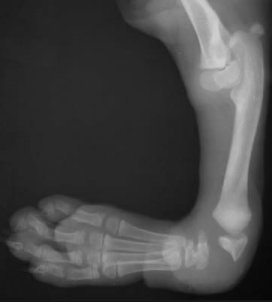
Image 10. Pre-axial complete intercalary radial
hemimelia. (X-ray copyright to Towle & Breur.)
Breeding & breeders experiences
There are reports on the Internet that suggest that poly x poly matings should not take place, but we could find no scientific evidence to substantiate this claim. However, until more is known it may be pertinent to only undertake poly x non-poly matings in order to track the gene responsible. That way should a problem ever arise it is known what line the problem arose in. Additionally, Danforth & Chapman both undertook poly x poly matings for the purpose of their research and reported no problems. The gene still behaved with variable expression even with these matings and when breeding related cats.
As discussed above it is vitally important when introducing new bloodlines into the gene pool that breeders do not unwittingly introduce any radial deformity. Foundation breeders need to be diligent when selecting cats, especially those with the triphalangeal thumbs. It would be pertinent to perform X-rays on polydactyl cats with no known history. It would also be wise to X-ray any non poly kittens from a poly litter that are to be sold as breeding cats.
To date the only polydactyl breed accepted for show status is the Pixie Bob. [15] The TICA Genetics Committee deemed the gene harmless, with the Committee Chair Solveig Pflueger a geneticist having bred polydactyl's herself. Were there any indication that this gene were harmful then it would not have passed the stringent tests required for competition. In the 1990's TICA accepted the Pixie Bob, some of whom are polydactyl. To advance a new breed or new trait within TICA a full report must be submitted to the Genetics Committee. These reports are seriously scrutinised and debated upon. The Genetics Committee allowed the polydactyl in the PB standard, which reads:
"Feet: Large, long and wide, almost round, with big knuckles and fleshy toes. Polydactyl allowed, seven toes maximum. Leg and wrist must be straight when viewed from the front. All toes must rest on the floor pointing forward. Foot must appear sound."
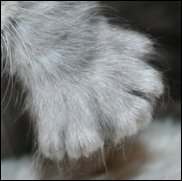
Image 11.
(Photo credit: Sheila Curtis)
From talks with Maine Coon polydactyl breeders it would appear that there is more than one foot type. One which resembles the human hand and called the mitten paw or snowshoe by breeders and the other which is more a combination of toes and often has an absent dew claw (see discussion above). Both types have been bred from with no known reported problems. The kitten in image 11 does not have a dew claw but her mother does, and neither the mother or kitten have the triphalangeal pollex and according to Pflueger should therefore be safe to breed from, should the breeder wish to. Though it is probably pertinent to X-ray this foot since radial deformities are variably expressed.
Whilst talking to breeders we encountered a breeder who had purchased a non-poly Maine Coon the offspring of a poly Sire and a non-poly Dam. When bred the cat sired some polydactyl kittens yet the breeder could see no evidence of an extra digit. It would seem possible here that the cat may have had a small nub that had not been observed by breeder or owner. It is then sensible when purchasing a kitten from a poly mating to pay attention to the feet if a non-poly is desired and may be prudent to have the feet X-rayed. PawPeds have been tracking polydactyl cats for some time now and denote a poly parent with the symbol (P) in the database. As early as 1970 the Maine Coon Breeders and Fanciers Association, [4] were considering "the possibility of requesting registering organisations to include the letter P with the registration numbers on all poly cats. At the present time there is no way of tracing polydactylism by looking at a pedigree. This would be a boon to breeders, but will take some study."
Conclusions
It would seem that the link with polydactylism and radial dysostoses occurred following the publicity that surrounded the breeding of the so-called 'twisty cats'. There appears to be no scientific data to substantiate any such direct link and it would appear mere coincidence that the cats used in this instance were polydactyls. In their paper Dysostoses of the Canine and Feline Appendicular Skeleton (2004), Towle and Breur remark that "dysostoses such as polydactyly only have cosmetic consequences that may interfere with competitive show exhibits". They go on to discuss the ethical dilemma a veterinarian may face should a client request the removal of the extra digit(s) so that the cat may compete on the show circuit without facing disqualification. This type of surgery is deemed by the American Veterinary Medical Association as cosmetic surgery and as such unethical.
From scientific study it may be concluded that the Pd gene causing polydactyly is a harmless dominant trait with variable expression. Since it is known to be of variable expression offspring may not display the same toe or foot configuration as it's polydactyl parent(s) and each poly kitten in the litter may display a differing configuration. Generally, "Polydactyly is of no clinical importance". (Towle & Breur) However, it is broadly recommended to maintain frequent nail trimming. All bones, nerves, musculature are well served to the extra digit and there has been nothing extraordinary discovered in the scientific research.
Appendix
Ataxia ~ Wobbliness. Incoordination and unsteadiness due to the brain's failure to regulate the body's posture and regulate the strength and direction of limb movements.
Carpals ~ One of the wrist bones. There are eight carpal bones that are arranged in two rows.
Cephalic ~ Relating to the head or the head end of the body.
Didactyly ~ The condition of having two digits on each limb.
Distal half ~ The more or furthest.
Dysostoses ~ The defective formation of bone.
Ectrodactyly ~ A condition which causes the fusing together of most of the digits on from mild to severe.
Hemimelia ~ A congenital complete or partial absence of 1 or more bones.
Hypodactyly ~ A condition where too few digits are expressed ie only 3 fingers and 1 known as the split foot and is caused by the Sp gene.
Metatarsals ~ Bones from heel to toe the bit in the middle Five cylindrical bones extending from the heel (the tarsus) to the toes. The metatarsals are numbered from the inside out, so the first metatarsal extends to the big toe.
Monodactyly ~ The condition of having one digit on each limb.
Palmar Pad ~ The palm-pad of the paw.
Pentadactyly ~ The condition of having 5 digits on each limb. Humans are generally pendactyls.
Phalangeal Pad ~ The pad relating to a bone in the finger or toe.
Pisiform ~ One of the carpal wrist bones.
Plantar Pad ~ The heel pad of the paw.
Pollex ~ (plural: pollices) the thumb.
Preaxial Longitudinal Intercalary Radial Hemimelia ~ A deformity causing an absence of the middle portion of the bone.
Radial ~ Pertaining to the radius, the smaller bone in the forearm.
Radial Aplasia ~ The absence of a radius.
Radial Hypoplasia ~ The underdevelopment of the radius, which may vary in degree.
Sesamoid ~ A little bone embedded in a joint capsule or tendon.
Supernumerary ~ Extra.
Syndactyly ~ A condition where two or more digits are fused togetehr. In the cat it is known as the split foot and is caused by the Sp gene.
Tetradactyly ~ The condition of having four digits on each limb ie many birds. The hand or foot. Often referred to as lobster claw syndrome due to it's appearance. Thumb in the human.
Tridactyly ~ The condition of having three digits on each limb ie the Rhiocerous.
Triphalangeal ~ Having three phalanges in a digit normally composed of only two.
Triphalangeal pollex ~ A 3 boned thumb (thumbs usually only have 2 bones).
Ulnar ~ Refers to the larger of the two long bones in the forearm. (The smaller one is the radius). The ulna is on the same side of the arm as the little finger.
Ulnaward ~ Ulna side/pointing towards ulna.
Bibliography
[1] Plotnick A. "Polydactylism (Extra Toes)".
[2] Darwin C. "The Variation of Animals and Plants Under Domestication".
[3] Commings K. "A Little Bit Extra". Catwatch February 2006 Vol 10, No 2.
[4] MCBFA Scratch Sheet, Winter 1970.
[5] Robinson R (2005). 4th Edition "Genetics for Cat Breeders and Veterinarians". Oxford, Butterworth/Heinemann.
[6] Sis RF & Getty R. (1968). "Polydactylism in Cats". Journal of Small Animal Clinicians.
[7] Jezyk PF. "Constitutional Disorders of the Skeleton in Dogs and Cats".
[8] Danforth, C.H. (1947). "Heredity of polydactyly in the cat". Journal of Heredity 38: 107-112.
[9] Danforth, C.H. (1947). "Morphology of the feet in polydactyly cats". American Journal of Anatomy 80: 143-171
[10] Chapman, V.A. & Zeiner, F.N. (1961). "The anatomy of polydactylism in cats with observations on genetic control". Anatomical Record 141: 205-217.
[11] Towle Heather A.M. DVM & Breur Gert. J. DVM PhD, DACVS "Dysostoses of the Canine and Feline Appendicular Skeleton". Vet Med Today JAVMA Vol 225, No. 11, December 1, 2004, 1685-1692.
[12] Pflueger S. (1998). "Polydactyly and Related Traits". Cat Fanciers Journal, Fall 1998, 5-6.
[13] Winterbrotham EJ et al. (1985). "Radial Agenesis in a Cat". Journal of Small Animal Practice, 393-398.
[14] King L. (2004). "So What Happened to the Maine Coon Polydactyl?". Maine Attraction, Issue 7, 2-4.
[15] The MCBFA voted in a Maine Coon Polydactyl Standard in 1970, which reads thus: "The Maine Coon Polydactyl Cat should conform to the Standard of the Maine Coon Cat, with the exception that multiple toes are allowed on either fore or hind paws, or both".
© All rights reserved. No parts of this publication may be reproduced
without express written permission from the authors.
